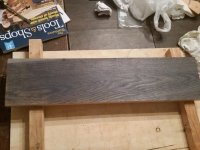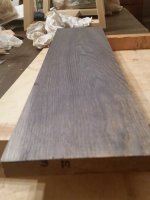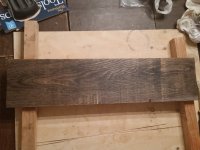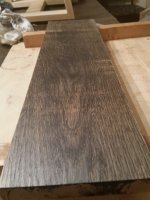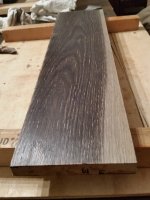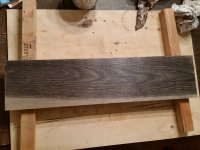Just wanted to do an update on my test. By request, I actually applied a finish of Osmo to the side initially stained with the vinegar and steel wool solution. To compare it with what a normal, water-based polyurethane finish would look like, I turned over the board, applied a new application of the stain, then sealed it with two coats of the poly. I gave it a light hand sand with 220 between the coats, which surprisingly still exposed some small spots of the wood at the top of the grain, as you can see in the pictures. I think the polyurethane looks much better than the Osmo. The Osmo darkens/yellows the underlying wood, which contrasts unfavorably with the stain, while the water based poly preserves the bluish/metallic tone.
This is not quite an apples to apples comparison though. Here are the variables:
1. Before applying the Osmo on the first side, I gave it a light hand sand with 150 grit paper, which is why the wood grain shows through a bit more. Looking at it now, I don't think this was necessary -- or, if I were to do it on a real project, I would probably sand down the board first before applying the stain. Right now, this board still has the planing marks.
2. The stain applied to the other side is actually more concentrated/charged with iron. The original solution was 16 fluid oz. of vinegar with a steel wool pad soaked for 24hrs. After straining this solution and applying it to the first side, I stuck a fresh steel wool pad in and soaked it for an additional 24 hrs. I actually like how dark it gets.







